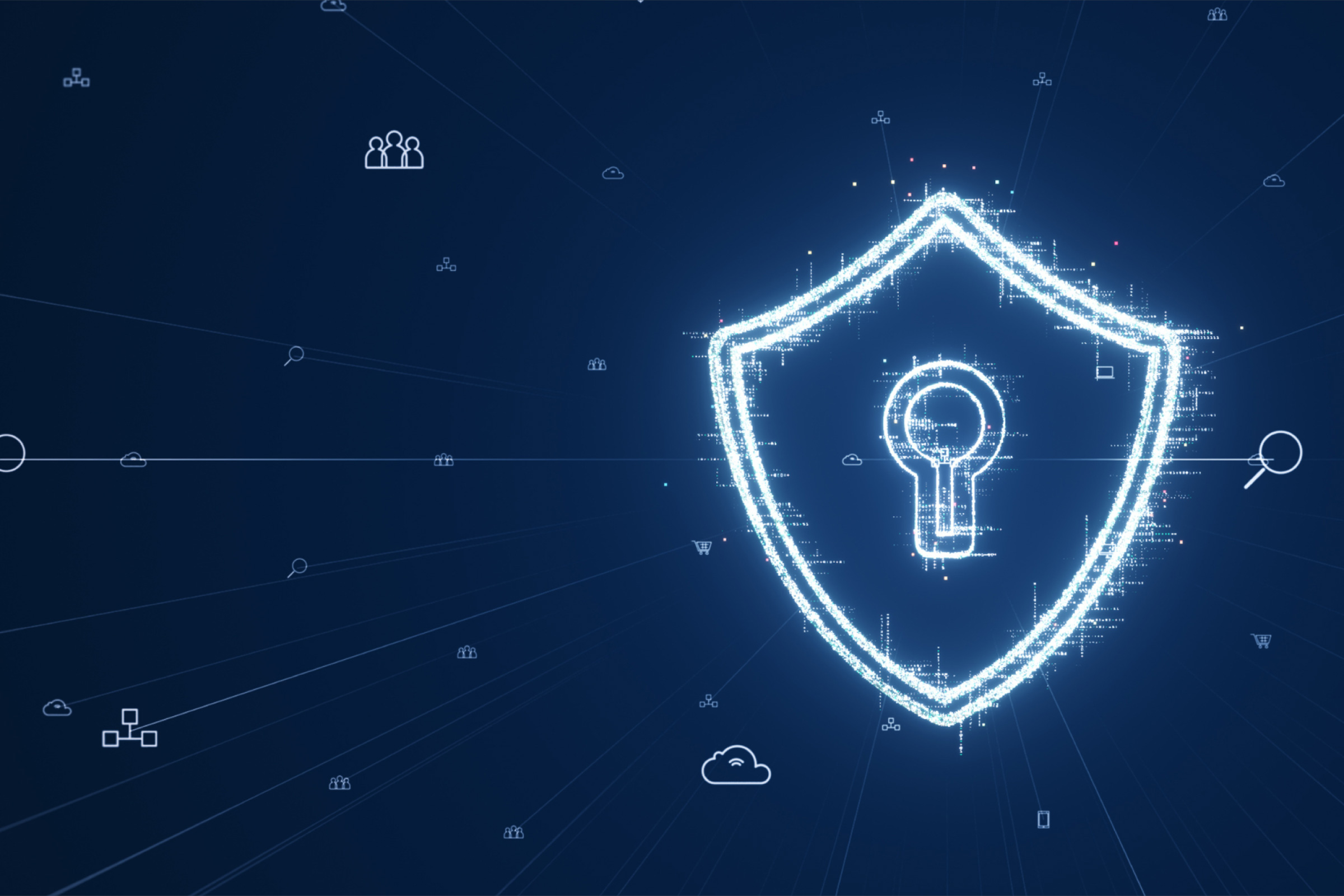What Is Cyber Threat Intelligence (CTI)?
Cyber Threat Intelligence (CTI) is the process of collecting, analyzing, and distributing information about potential or current cyber threats to improve an organization’s security posture. It involves understanding the motives, capabilities, and tactics of threat actors, as well as identifying indicators of compromise (IoCs) and attack patterns.
CTI involves filtering through vast data sources, contextualizing findings, and producing actionable recommendations tailored to an organization’s threat landscape. By using CTI, organizations can proactively defend against cyber attacks, improve their incident response capabilities, and make more informed security decisions. Key aspects of cyber threat intelligence include:
- Collection: Gathering data from various sources, including open-source intelligence (OSINT), dark web monitoring, and threat feeds.
- Dissemination: Sharing the analyzed information with relevant teams and stakeholders to enable timely action.
- Actionable insights: Providing actionable information that can be used to prevent, detect, and respond to cyber threats.
Benefits of Cyber Threat Intelligence
Cyber threat intelligence offers organizations advantages that can improve overall security and operational efficiency:
- Increased visibility: CTI delivers a comprehensive view of the threat landscape, enabling security teams to pinpoint potential risks and prioritize mitigation efforts.
- Enhanced threat detection: Continuous monitoring and analysis of threat data improve the ability to identify sophisticated attacks that might otherwise evade detection.
- Stronger security posture: By uncovering system vulnerabilities and weaknesses, CTI empowers organizations to take proactive steps to strengthen defenses.
- Reduced risk: Insight into threat actors’ tactics and techniques lowers the likelihood of successful attacks.
- Informed decision-making: CTI equips organizations with actionable intelligence to guide security investments and set effective priorities.
- Accelerated incident response: Timely, relevant intelligence enables faster and more effective incident resolution.
- Cost efficiency: By proactively preventing security breaches and expediting response, CTI reduces operational disruption and optimizes security spending, delivering substantial long-term savings.
The Lifecycle of Cyber Threat Intelligence Tools
1. Collection
CTI collection phase involves sourcing relevant information from a mix of internal logs, network traffic, vulnerability databases, and external intelligence feeds.
This step requires security teams to identify which assets and data are critical and focus collection efforts accordingly. Automated tools scan open-source platforms, dark web forums, and commercial threat databases to bring in large volumes of potentially relevant data.
Effective cyber threat intelligence programs distinguish between mere noise and meaningful intelligence by applying filters, enrichment, and validation mechanisms. Collection strategies should be tailored to the organization’s needs, ensuring that key data points are captured without overwhelming threat intelligence analysts with irrelevant or duplicative information.
2. Analysis
Analysis is the process of turning raw data into actionable intelligence by interpreting patterns, trends, and relationships among threat artifacts.
Skilled analysts use frameworks like MITRE ATT&CK or kill chain models to categorize and prioritize threats, mapping them to organizational risk profiles. Techniques may include behavioral analysis, correlation, and attribution of indicators like hashes, IPs, and domains to existing or emerging threats and threat actor groups.
Contextualization is also crucial during analysis. This means considering the organization’s industry, typical adversaries, and risk tolerance when assigning significance to findings. By focusing on relevant threats and dismissing background noise, threat intelligence analysts can deliver intelligence that is precise and aligned with business needs.
3. Dissemination
Dissemination involves communicating intelligence findings to appropriate stakeholders in a format tailored to their roles. This could mean producing executive summaries for leadership, technical reports for IT teams, or real-time alerts for security operations centers.
Standardized formats and delivery platforms like dashboards, automated notifications, and periodic briefings help ensure that intelligence reaches decision-makers rapidly and efficiently. Effective dissemination also means ensuring intelligence is accessible and understandable.
Overly technical language can alienate non-technical stakeholders, while too much generalization risks omitting critical details. Properly structured dissemination allows each part of the organization to take swift and informed action based on the intelligence received.
4. Actionable Insights
The primary objective of cyber threat intelligence is to generate insights that drive informed actions. Actionable intelligence translates raw data and analysis into concrete steps such as blocking malicious IPs, updating firewall rules, or launching targeted employee awareness campaigns.
Clear, prioritized recommendations bridge the gap between intelligence production and practical application within security operations or risk management. Regular feedback between intelligence producers and consumers is also necessary.
Threat intelligence analysts must align outputs with operational needs, updating processes to reflect lessons learned and evolving threats. Actionable insights empower organizations to detect and neutralize current threats and to adapt their defenses against future attacks.
Related content: Read our guide to threat intelligence tools
Tips from the Expert

Dima Potekhin, CTO and Co-Founder of CyCognito, is an expert in mass-scale data analysis and security. He is an autodidact who has been coding since the age of nine and holds four patents that include processes for large content delivery networks (CDNs) and internet-scale infrastructure.
In my experience, here are tips that can help you better operationalize cyber threat intelligence and gain a competitive edge in defending your organization:
- Map adversary TTPs directly to the environment: Go beyond generic threat actor profiles. Map adversary tactics, techniques, and procedures (TTPs) from CTI to the company’s network architecture, applications, and business processes using frameworks like MITRE ATT&CK. This contextual mapping highlights attack paths unique to the environment and uncovers blind spots in defenses.
- Build a fusion cell for CTI and business alignment: Establish a small “fusion cell” that combines CTI analysts, risk managers, and business unit leads. This cross-functional team ensures intelligence is prioritized based on business criticality—not just technical severity—so high-value assets get proportionate protection.
- Deploy deception techniques based on live CTI: Use threat intelligence insights to inform deception technologies (honeypots, decoy credentials, fake assets). If intelligence reveals attackers targeting a specific service (e.g., RDP), deploy a decoy to gather telemetry and identify adversary behaviors without risking production systems.
- Correlate CTI with insider threat and supply chain data: Enrich external threat intelligence with internal signals like employee behavioral anomalies and supplier risk ratings. This fusion helps detect blended threats (e.g., external actors leveraging compromised contractors) that traditional cyber threat intelligence programs often overlook.
- Proactively monitor adversary tooling evolution: Track how threat actor tools and infrastructure evolve, such as the adoption of new malware obfuscation techniques or domain generation algorithms (DGAs). This foresight allows teams to preemptively tune detection systems against emerging threats rather than waiting for IOCs.
Use Cases of Cyber Threat Intelligence
Incident Response and Threat Hunting
Cyber threat intelligence supports incident response by providing context to identify, classify, and remediate security incidents. When security teams detect suspicious activity, CTI helps correlate indicators of compromise (IOCs) with known adversaries or attack campaigns, enabling faster root cause analysis. This accelerates containment and eradication efforts.
Threat hunting benefits from CTI by informing hypotheses and guiding searches for latent threats within the environment. With knowledge of TTPs and campaign indicators, security analysts can seek hidden threats that may evade automated tools. CTI-driven hunting increases the likelihood of catching advanced persistent threats before they cause a major impact.
Vulnerability Management and Patching
In vulnerability management, CTI informs prioritization by contextualizing which vulnerabilities are most likely to be exploited based on real-world attack trends. Security teams can move beyond simply patching based on CVSS scores and instead focus efforts on vulnerabilities actively targeted by threat actors relevant to their sector.
Cyber threat intelligence programs also aid in tracking exploit kits, proof-of-concept code, and public disclosures that threaten organizational assets. This allows for timely response when a vulnerability transitions from theoretical risk to an active threat.
By integrating CTI into patch management workflows, organizations reduce the gap between vulnerability disclosure and remediation.
Risk Assessment and Business Continuity Planning
Cyber threat intelligence improves risk assessment by providing detailed knowledge about adversary tactics and trends specific to the organization’s industry or geographic location.
Using this information, organizations can more accurately map threats to critical business processes and IT assets, improving risk quantification and prioritizing mitigation strategies. This supports more informed decisions at both technical and executive levels.
For business continuity planning, CTI helps anticipate potential disruptions from cyber incidents, enabling better preparation and response strategies. By understanding potential threat scenarios, organizations can test their resilience, adapt recovery plans, and ensure incident playbooks are up-to-date with current threat data collection, strengthening overall business resilience.
Cybersecurity Awareness and Training Programs
Cyber threat intelligence helps tailor cybersecurity awareness and training to the current threat landscape. Instead of generic guidance, organizations can use real examples and targeted content based on recent adversary campaigns or social engineering techniques. This increases relevance and engagement, boosting the likelihood that employees will recognize and resist incoming threats.
Integrating CTI into training materials also allows organizations to educate staff on the latest phishing methods, malware trends, and attack vectors. This continuous update ensures awareness programs evolve alongside the threat landscape, maximizing their effectiveness in reducing human error and strengthening the organization’s overall security posture.
Behind the Scenes: Threat Intelligence Concepts
To better understand how cyber threat intelligence platforms work, let’s review some foundational concepts in threat intelligence.
Strategic CTI
Strategic threat intelligence delivers high-level threat analysis focusing on global threat trends, macroeconomic factors, and motivations behind cyber adversaries. Its target audience includes executives and board members needing insight to prioritize investments and overall risk management strategies.
Strategic threat intelligence leverages industry reports, geopolitical analysis, and threat forecasting to provide context to long-term security planning. This type of intelligence emphasizes the “why” and “how” behind major threats and shifts in the digital environment.
By tracking changes in nation-state activity or emerging cybercriminal business models, strategic CTI informs big-picture decisions that shape organizational security policy and investment over the long term.
Tactical CTI
Tactical cyber threat intelligence deals with information necessary for deploying and configuring security controls to counter attack TTPs. Its scope includes identifying IOCs, adversary methodologies, and active campaigns relevant to IT and security teams.
Tactical intelligence supports day-to-day defense with timely, granular data enabling rapid operational response. Focused primarily on the “how” of threats, tactical CTI helps SOC analysts, firewall administrators, and incident responders understand and detect new attacks.
By supplying up-to-the-minute actionable details, it enables teams to fine-tune detection mechanisms, update access controls, and enforce network segmentation more effectively.
Operational CTI
Operational intelligence bridges the gap between strategic outlook and technical defense, emphasizing details on ongoing attacker campaigns, infrastructure, and tools. This type helps organizations understand adversary objectives, planned timelines, and methods, enabling targeted preparation and timely defense.
Operational cyber threat intelligence is valuable for key decision-makers and security managers coordinating resources against threats. Examples of operational intelligence include campaign timelines, planned phishing themes, or newly identified malware infrastructure.
By providing this level of context, operational intelligence empowers organizations to preempt imminent cyber attacks, disrupt adversary tactics, and better align monitoring efforts to active threats.
Technical CTI
Technical CTI refers to the “nuts and bolts” data required for automated or highly granular defensive measures. This includes IP addresses, domain names, malicious hash values, exploit signatures, and protocol anomalies. Security tools such as intrusion detection/prevention systems (IDS/IPS), SIEMs, or antivirus engines rely on this technical data for automation and rapid blocking of threats. Technical intelligence is fast-moving and often has a short shelf life due to rapid changes in adversary infrastructure. Maintaining up-to-date feeds and ensuring automated tools have the latest data are critical for defending against commodity malware, botnets, and broad-based attacks. Technical CTI supports machine-speed threat detection and mitigation across organizational networks.
Benefits of Cyber Threat Intelligence
Open-Source Intelligence (OSINT)
OSINT is derived from publicly accessible sources such as news articles, blogs, social media, threat reports, and government advisories. Security teams use OSINT to track threat actor activity, analyze trending vulnerabilities, and monitor chatter about exploits or upcoming campaigns.
The low cost and availability make OSINT a foundational component in many cyber threat intelligence programs. Despite its value, OSINT is sometimes unreliable or low-confidence, as it may include rumors or deliberate misinformation. Analysts must validate findings against other sources and apply filtering to reduce noise.
When vetted and integrated properly, OSINT fills intelligence gaps and complements enterprise and commercial CTI feeds.
Human Intelligence (HUMINT)
HUMINT involves direct communication and engagement with people who possess insider knowledge about threat actors or planned cyber attacks. This intelligence may be gathered from relationships with law enforcement, internal staff, or confidential informants who provide insight into criminal intent, tactics, and underground activities.
HUMINT is often used to corroborate or improve findings from technical sources. While HUMINT helps understand adversaries’ motivations and plans, it is labor-intensive and sometimes difficult to verify. Effective use requires building trusted relationships over time and protecting sensitive information.
Organizations that incorporate HUMINT gain a more nuanced understanding of threats, especially those targeting their sector or geography.
Technical Intelligence (TECHINT)
TECHINT focuses on collecting and analyzing technical indicators and digital footprints such as malware signatures, exploit code, network traffic, and forensic artifacts. Sources include internal logs, honeypots, sandbox detonations, and public threat data repositories.
Security solutions depend heavily on TECHINT to detect, block, and respond to malicious activity in real time. TECHINT is especially important for organizations seeking automation in threat detection.
Regular updates to indicator feeds and rapid sharing of analyzed artifacts ensure defenses stay current in the face of fast-evolving threats. However, an over-reliance on TECHINT, without broader context, risks missing targeted or novel cyber attacks.
Commercial Threat Intelligence Providers
Commercial providers offer curated intelligence services through subscription feeds, dashboards, or managed services. These vendors aggregate data from proprietary research, global honeynets, malware threat analysis, and customer telemetry to deliver verified, high-confidence threat intelligence. Their services often include enrichment, correlation, and customized reporting to suit customer environments.
While commercial cyber threat intelligence tools can expedite intelligence maturity, it comes at a financial cost and may not always align with an organization’s niche threat landscape. Security teams must vet providers for quality, relevance, and integration capabilities.
Best Practices in Implementing Cyber Threat Intelligence
Organizations should consider the following practices to ensure a thorough and effective CTI strategy.
1. Establish a Dedicated Threat Intelligence Team
A successful CTI program requires a dedicated team possessing a mix of analytical, technical, and communication skills. This team is responsible for implementing CTI processes, managing data sources, and contextualizing findings according to the organization’s risk profile.
Whether in-house or hybrid with vendor support, the team fosters coordination between intelligence functions and other security roles. Team members should have clear roles and responsibilities, along with access to ongoing training and development.
The structure may include analysts, threat hunters, and liaisons to IT, legal, and executive stakeholders. A coordinated approach ensures intelligence outputs are timely, relevant, and integrated into strategic and tactical decision-making.
2. Use Structured Data Formats
Structured data formats like STIX, TAXII, and OpenIOC are critical for exchanging threat intelligence between tools and organizations. These formats enable the automation of data ingestion, correlation, and response, reducing manual effort and minimizing information loss. Adopting standards simplifies the flow of intelligence and ensures consistent communication across the security stack. Organizations should prioritize integrating structured data into their workflows and selecting tools compatible with industry standards. This enables both internal efficiencies and external information sharing, supporting faster collective response to evolving threats. Structured formats provide a foundation for interoperability and scalable intelligence management.
3. Integrate Threat Intelligence into Security Operations
Cyber threat intelligence should be integrated with existing security operations, including SIEMs, SOC workflows, and incident management platforms. Automation and orchestration help route relevant intelligence to the right teams, enabling fast triage, investigation, and response. Integration ensures that defended systems are updated with the latest indicators and context from threat feeds.
Organizations should design processes that use intelligence for detection, investigation, and remediation steps. Cross-functional collaboration is essential—threat intelligence should inform vulnerability management, user training, and executive reporting, not operate as a siloed function.
4. Implement Continuous Monitoring and Feedback Loops
Effective CTI requires ongoing monitoring of both external threats and internal telemetry. This enables timely detection of new attack methods, indicators, and evolving adversary behavior. Feedback loops between intelligence producers and operational teams ensure lessons learned during detection or response improve future intelligence accuracy and usefulness.
Continuous improvement involves evaluating what intelligence proves relevant, how it translates into risk reduction, and updating processes to close identified gaps. Organizations that emphasize feedback and agile adaptation improve resilience, ensuring the CTI cycle remains relevant amid an ever-changing threat landscape.
5. Engage with Information Sharing Communities
Active participation in sector-specific ISACs, government partnerships, and industry sharing communities strengthens CTI programs through collective defense. Information sharing accelerates detection of new threats, provides early warning, and improves the context and richness of intelligence for all members. These communities foster collaboration and trust between organizations facing similar challenges.
Engagement should go beyond passive receipt; organizations should contribute findings, lessons learned, and anonymized IOCs back to the community. This supports industry cybersecurity and increases an organization’s own visibility into collective threat activity. Information sharing creates a force multiplier effect, benefiting all participants in the ongoing battle against advanced cyber threats.
Cyber Threat Intelligence with CyCognito
CyCognito is an external exposure management platform that enables granular Attack Surface Management (ASM) by uncovering and validating every external asset attackers could target (including unknown, unmanaged, and cloud-based systems).
The platform maps the entire external attack surface of an organization using reconnaissance techniques similar to those of sophisticated threat actors, then continuously tests and prioritizes exposures so security teams can focus on what matters most, reducing mean time to the mean time to detect (MTTD), contain (MTTC) and respond (MTTR).
CyCognito uniquely enhances cyber threat intelligence programs by feeding them a rich blend of discovery, context, testing, and exploit data. It identifies and attributes assets with high confidence, enriches them with business and technology context, measures their attractiveness and discoverability to adversaries, validates them through active security testing, and aligns results with real-world exploitation trends (including KEV data and attacker behavior patterns). This combination transforms the CTI insights generated by CyCognito into concrete, prioritized actions.












